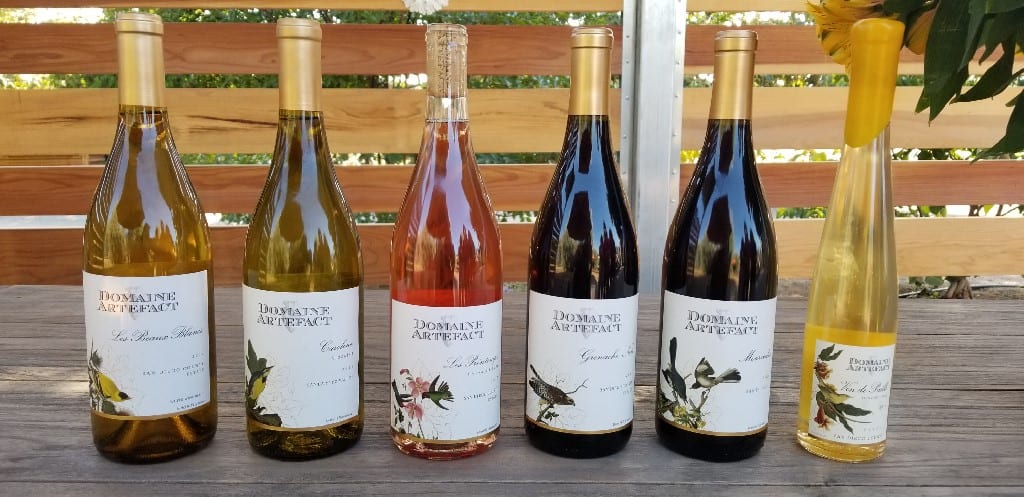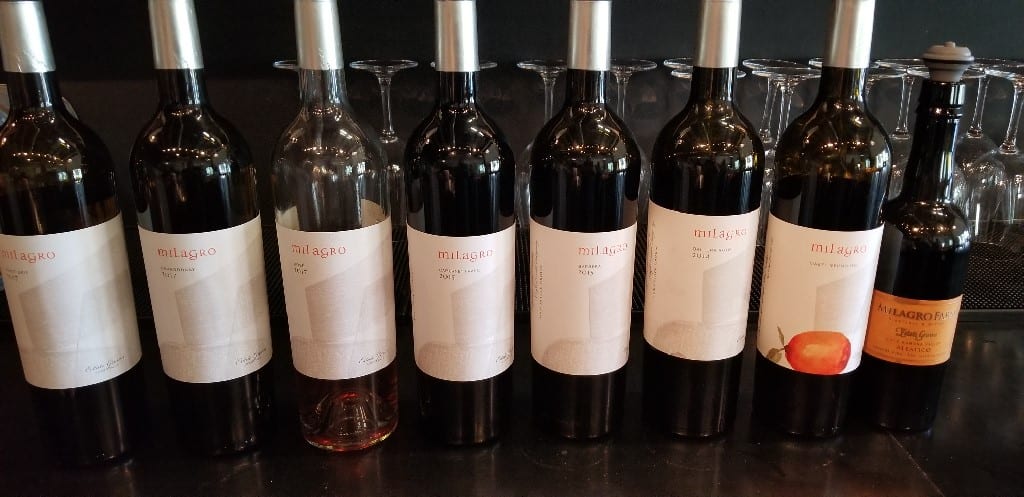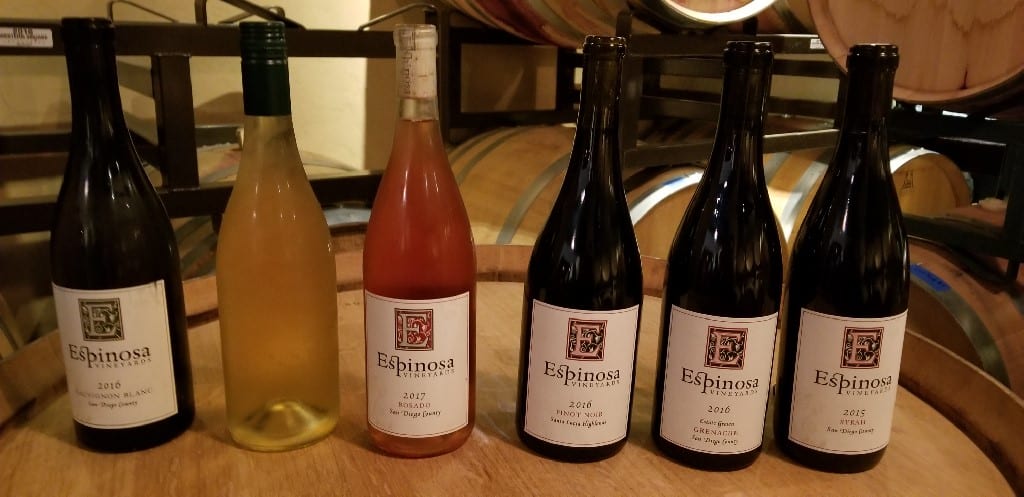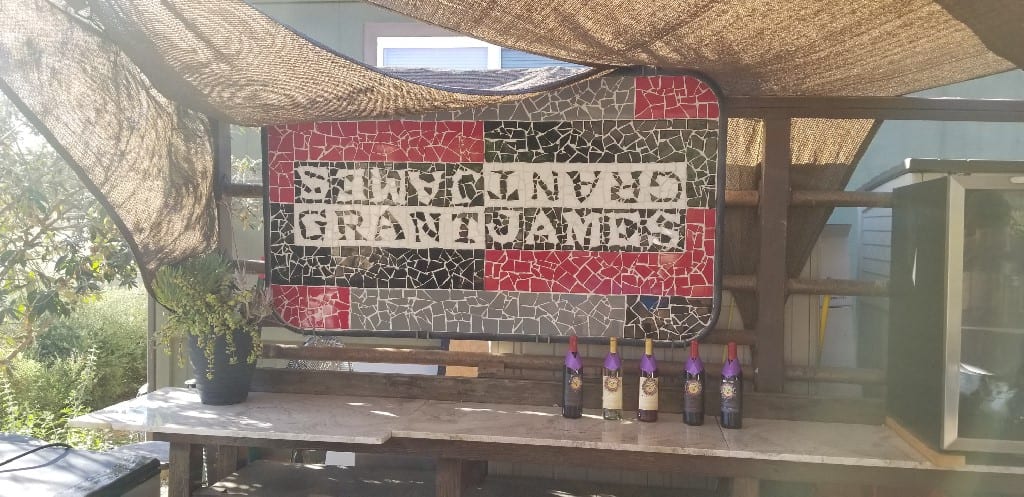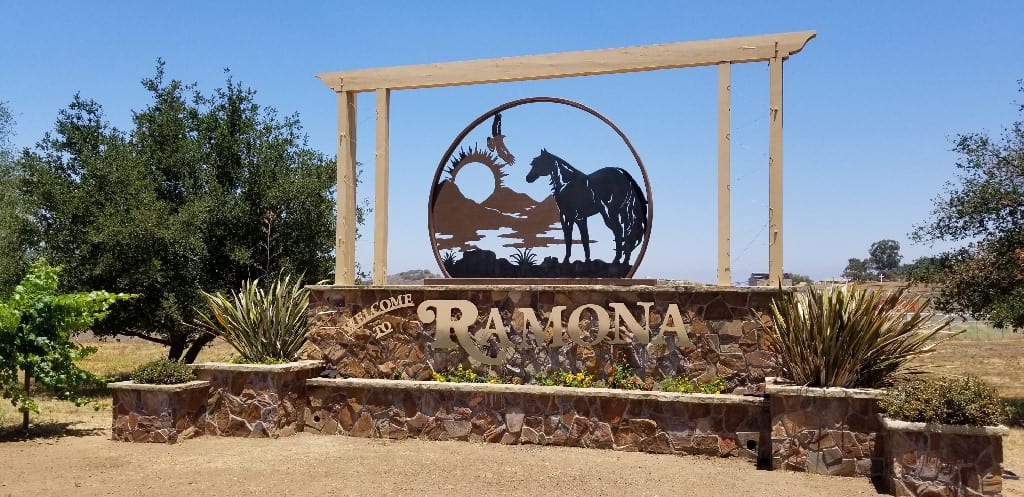
31 Jul Ramona, San Diego – A New Wine Destination
A few weeks ago, I went wine tasting for the weekend in California. I did not go to Napa or Sonoma. I did not go to Paso Robles or Santa Barbara. I did not go to Temecula. I went wine tasting in Ramona Valley in San Diego. Yes, the Ramona Valley is a quickly growing wine destination that I wrote about in my recent column in the Napa Valley Register.
Living in California, we are lucky that no matter what city we live in, there is a wine region in our backyard. San Francisco has Napa and Sonoma, Los Angeles has Santa Barbara, Orange County has Temecula and San Diego has the Ramona Valley.
Yes, there is a wine region in San Diego County. In 2006, the Ramona Valley AVA was the 162nd area to be designated as an American Viticulture Area. It was only the second AVA to be designated in San Diego County (San Pasqual Valley was designated in 1981) and the third in Southern California (Temecula Valley was designated in 1986). These three AVAs all fall within the large South Coast AVA, which covers all of Southern California south of Santa Barbara.
But wine is not new to San Diego. San Diego was one of the first wine regions in California and wine production of Mission San Diego de Alcala (aka Mission grape) has been traced back to 1781. Grapes were first planted in Highland Valley, which is in the Ramona Valley AVA, in 1893.
Ramona Valley, nestled in the front range of the Pacific coastal mountains, is located 35 miles northeast of San Diego. There are 100 acres of vineyards planted in the 89,000-acre area. It is home to more than 80 commercial vineyards and 20 bonded wineries. And more development is on its way.
Ramona Valley has five key markers that are required for a viable wine region.
— Climate: A diurnal shift, influenced by the coastal marine layer and fog, means that Ramona has hot days and cool nights. Ramona has several micro-climates and is similar to the Southern Mediterranean parts of Europe.
— Soil: The primary soils are decomposed granite.
— Altitude: More than 1,400 feet above sea level, Ramona vineyards sit at a high altitude.
— Sunshine: Ramona has a lot of sun days, which allows the grapes to ripen evenly.
— Water: Occasional summer thunderstorms occur but early winter storms are very rare. Most wineries use drip irrigation.
A first-generation wine region, the Ramona Valley Vintners Association was started in the early 2000s, and they began working on AVA status in 2006. In 2007, shortly after receiving their AVA status, the destructive Witch Creek Fire burned 197,990 acres and then merged with the Poomacha and McCoy fires for a total burn area of 247,800 acres. So, the development of the Ramona Valley wine region as it exists today really began 10 years ago.
Most of the wineries in the Ramona Valley started as home wineries. Most of the winemakers are self-taught and have learned as they go. The vineyards are in their backyards and grapes planted include Italian varieties such as Sangiovese, Barbera, Aglianica; French varieties such as Viognier, Sauvignon Blanc, Cabernet Franc, Grenache, Merlot, Syrah, Cabernet Franc and Spanish varieties such as Albanino, as well as Tannat and Zinfandel. Small amounts of Grenache Blanc, Roussanne, Marsanne, Clairette Blanche, Picpoul Blanc, Mourvedre, Counoise and Petit Sirah are also planted.
Yes, Ramona is a young region and, in many ways, it is not known which varieties will thrive, but success is being found with many of them so far.
The wineries all have tasting rooms open to the public. The tasting rooms are located on the same property as their homes. Some converted their garages into a proper tasting room/wine shop and others have converted the large patios and decks of their homes to serve as welcoming tasting lounges.
Wineries to visit:
Lynn, a landscape architect, and Mark Robinson, a high school chemistry teacher, met at UCLA as environmental studies majors. They purchased their 30-acre property in Highland Valley in 2007. The property already had power and wells, and they planned to build a house, plant grapes and have horses.
Just two weeks after they bought their property, the fire broke out. The entire property burned, including 1,000 grapefruit trees and grassland. They have regraded 10 acres to date, rebuilding all lines.
They tracked the soil for 18 months and found that the 33rd parallel is one mile away. They gravitated toward the southern hemisphere and planted 12 Rhone varieties, 70 percent red grapes and 30 percent white grapes. 2014 was their first harvest and the tasting room opened in 2015.
Domaine Artefact 2017 Les Printemps Grenache Rose ($30) – Aromas of wild strawberries, cherries, raspberries and pomegranate, crisp, delicate and elegant on the palate with fresh mineral notes.
Domaine Artefact 2016 Grenache ($41) – Fruity with notes of cherries, raspberries and strawberries, medium-body, elegant and food friendly.
Domaine Artefact 2016 Mourvedre ($43) – Medium-bodied with gorgeous floral and black fruit notes, soft tannins on the palate.
Kit and Karen Sickels purchased 110 acres in 2001 that are tucked away in a hillside on Old Julian Highway. The first vines were planted on 44 acres in 2003, the wine cave and crush house were built in 2004 and the first wine was sold in 2007. Three other families became partners with the Sickels and a new modern tasting room opened in 2016. In 2017, renowned Mexican winemaker Hugo d’Acosta, who trained in Bordeaux and makes several brands in the Valle de Guadalupe, joined the Milagro team.
Milagro 2017 Rose of Sangiovese ($29) – bright fruit notes of strawberry and watermelon rind, refreshing, a great summer wine
Denise and Peter Clarke bought their property in Highland Valley in 1997. The five-acre parcel had 1,100 30-year-old avocado trees on it. They pulled 200 of the trees to build their house but then lost 900 of them in the fires.
Having visited Italy prior to the fire, they had romanticized about having a vineyard and decided to replant with vines. They planted 3,600 vines of Sangiovese Grosso, Barbera, Cabernet Sauvignon and Petit Sirah. After working in human relations for 24 years, Denise became the winemaker, getting into the wine industry by default, and loves wines with big aromatics and structure.
Altipiano 2016 Sangiovese ($65) – Plum, strawberry, cherry and floral aromas, medium-bodied with bright acidity and spice notes
Robert and Noelle, both microbiologists in the Bay Area, returned to San Diego to help family after the wildfires. They decided to focus on four acres in the Highland Valley and planted Tempranillo, Malbec and Grenache in 2008. Today they have eight varieties planted with Spanish varieties as the main focus.
Espinosa 2017 Rosado ($22) – Made from 75 percent Grenache and 25 percent Syrah, notes of strawberry and watermelon Jolly Rancher, dry and refreshing.
Espinosa 2016 Grenache ($30) – Dried tart cherry and marzipan on the nose, bright acidity and spice on the finish
Jacques Sapier, a lawyer in San Diego, read about the new Ramona AVA and convinced his wife Susanne, an educator and pastor, to move there. They purchased 9 acres, of which seven-and-a-half are under vine. Susanne took charge planting the vines and makes the wine.
Vineyard Grant James 2016 Viognier ($36) – Crisp and bright wine with notes of lemon, lime and honeysuckle
Laurie and Ian Wagner moved to Ramona in 1991 and started as amateurs in 2008. Ian worked as a plant salesman and Laurie has a degree in landscaping. Trips to Europe inspired them to plant vineyards and they researched for two years about what to plant. They planted 3,000 vines to six red grapes – Zinfandel, Merlot, Sangiovese, Cabernet Sauvignon, Cabernet Franc and Barbera.
The only certified sustainable winery in Ramona, Ramona Ranch Vineyard and Winery is owned by Teri Kerns and Mike Moore. They purchased the 10-acre property in 2004 and planted two-and-a-half acres.
Norm Case and Elaine Lyttleton bought land in 2006 and opened a tasting room in 2014. The property is named after the Hatfield Creek located behind the property. Three acres are planted to Petit Sirah and Zinfandel
Geraldo and Rosa Cordiano, originally from Italy, bought their property in 1991. Geraldo saw the potential of the region and planted 20 acres in 2002. Cordiano Winery might be the most popular destination in Ramona as they also have a pizza restaurant on site.
Read the original story in the Napa Valley Register.
Discover more from Please The Palate
Subscribe to get the latest posts sent to your email.





